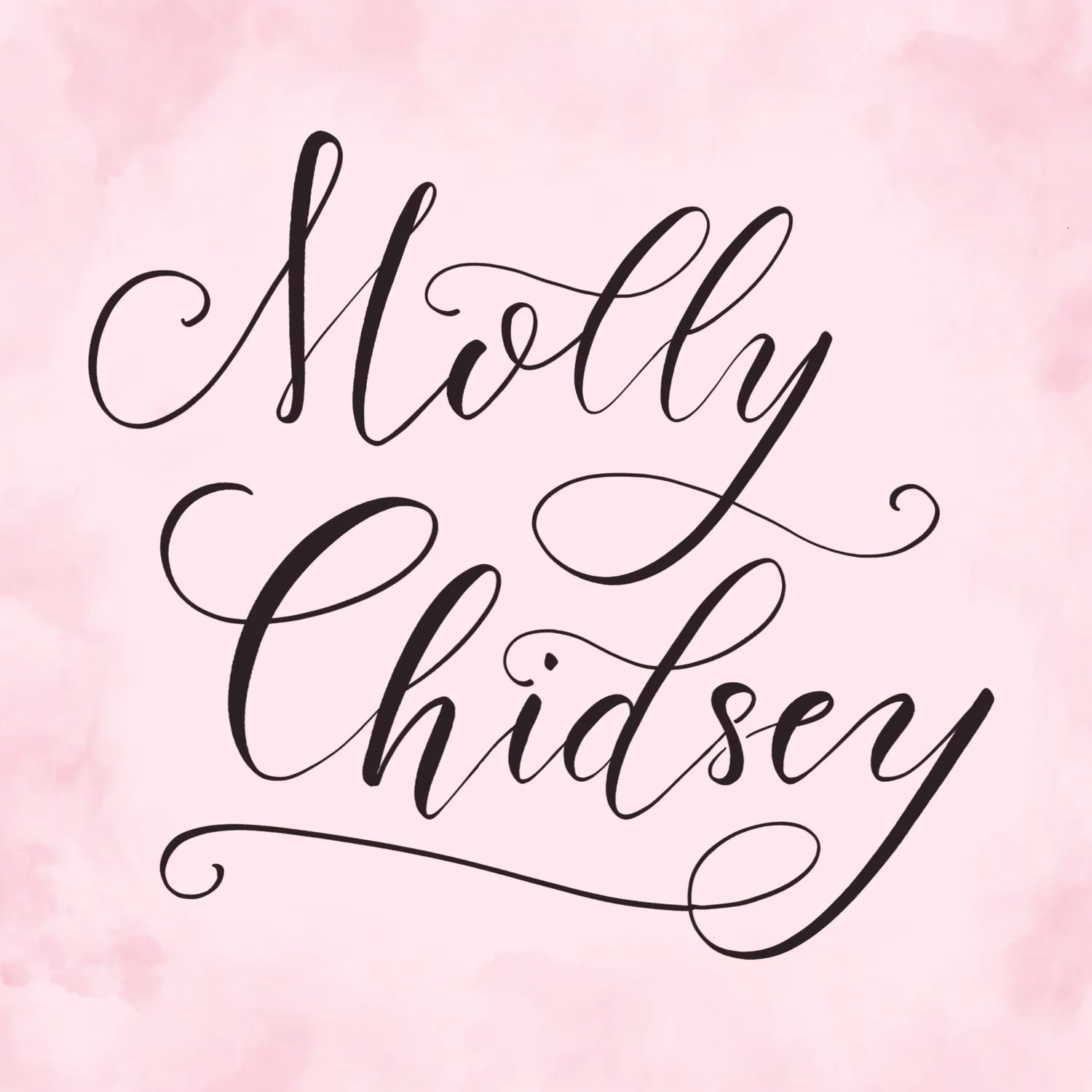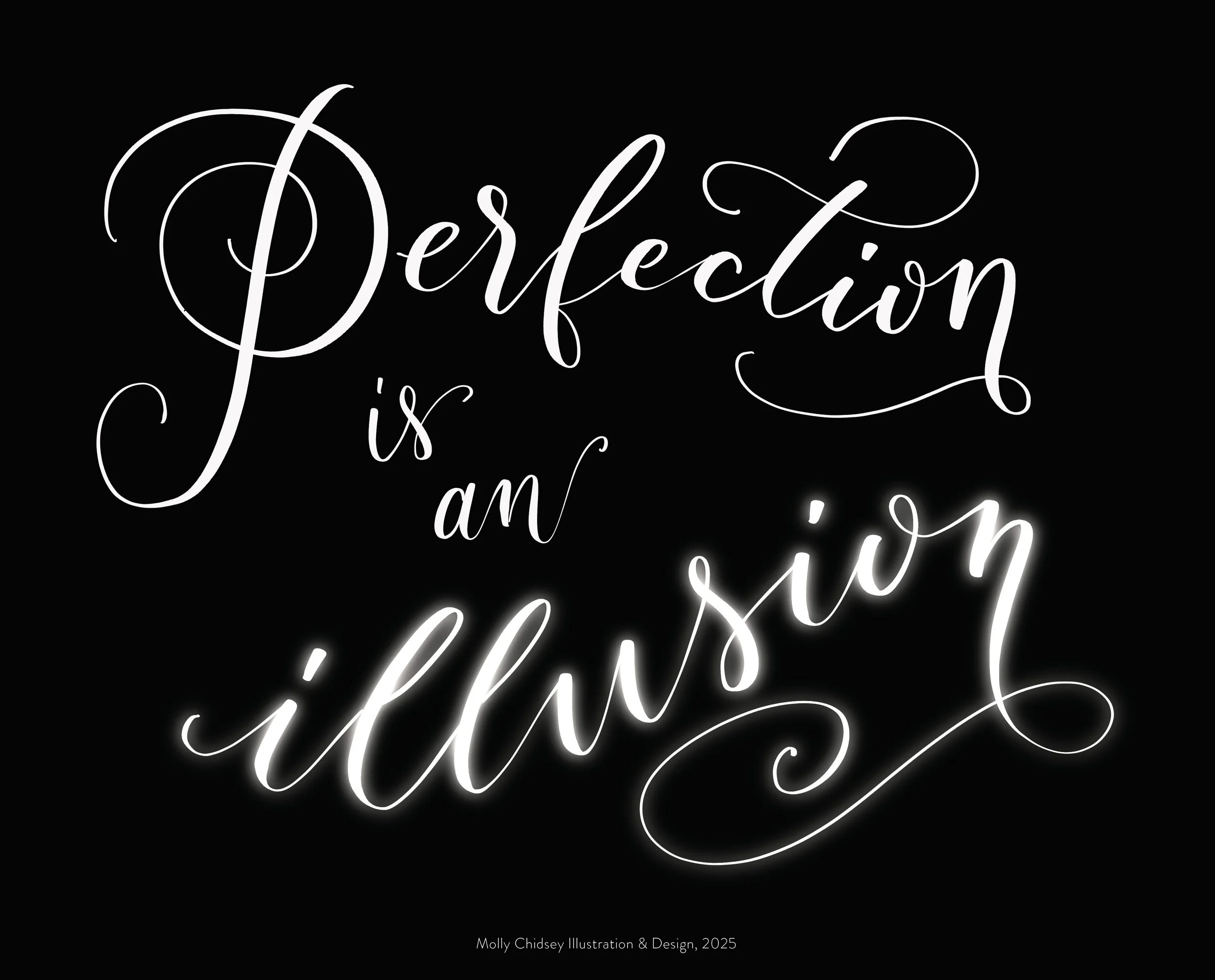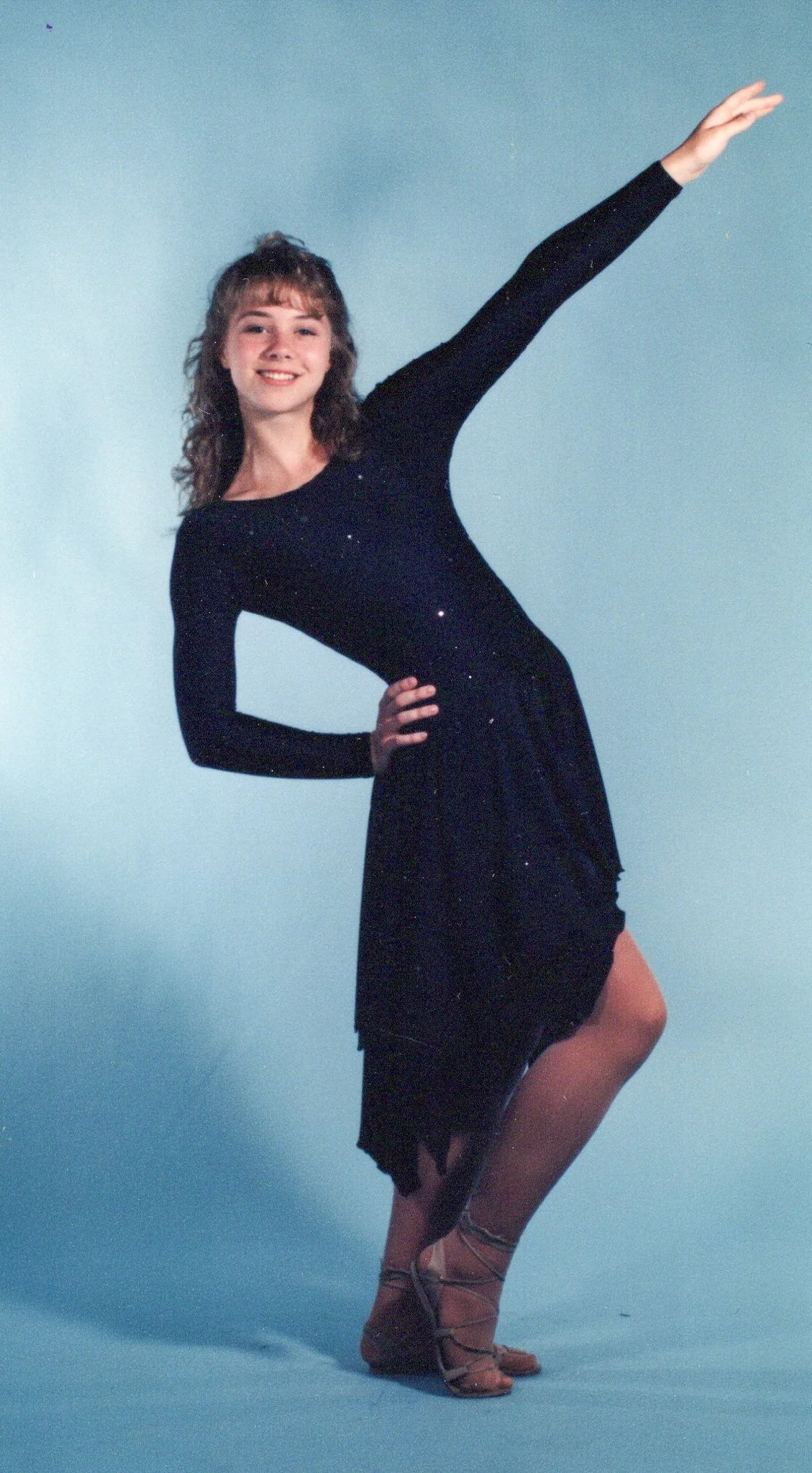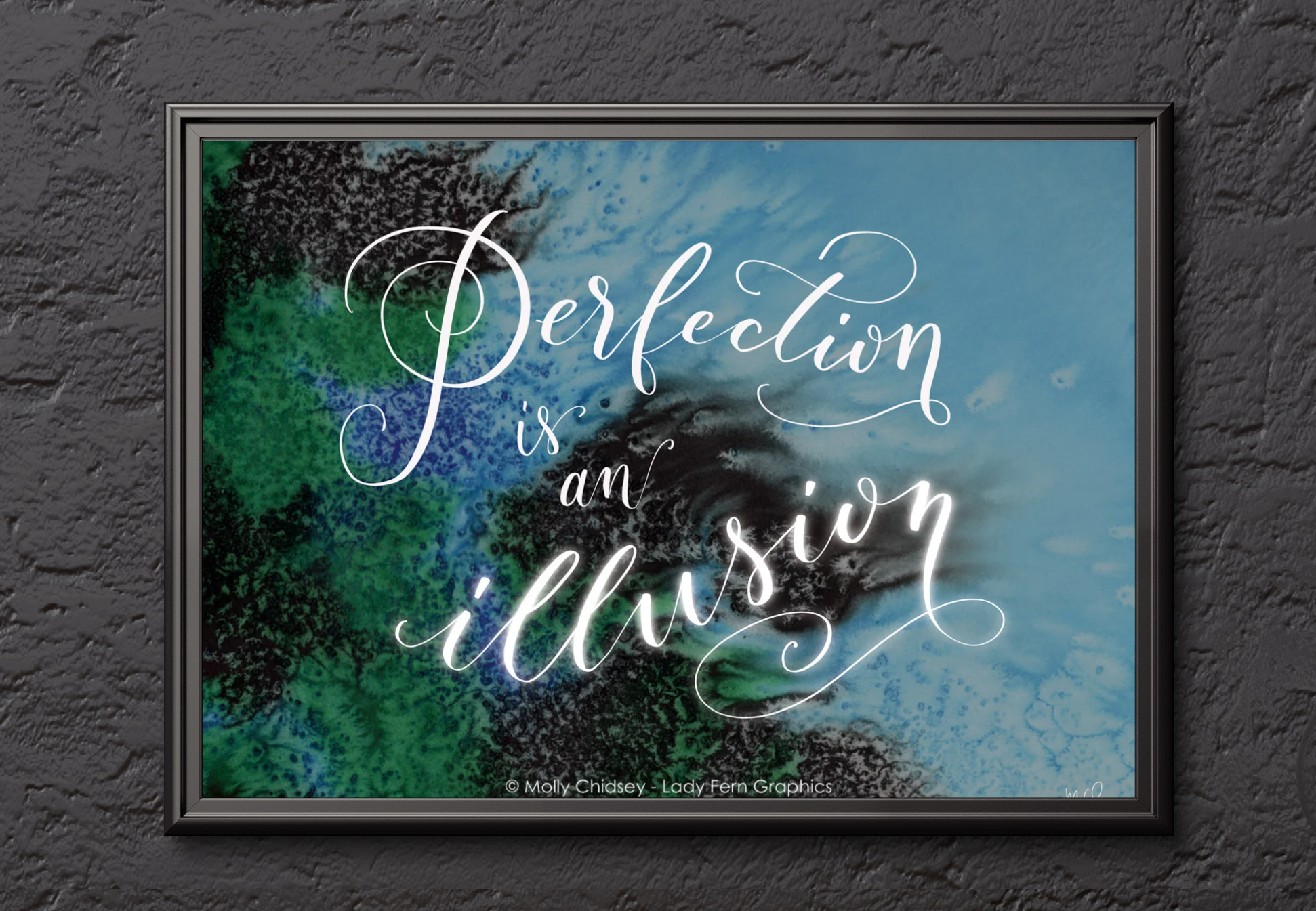On Perfection
Hi, my name is Molly and I am a perfectionist.
More specifically, I am a recovering perfectionist.
I made some calligraphy art to remind me that perfection itself is an illusion. Here it is:
Modern calligraphy created on iPad Pro with Apple Pencil and Procreate app.
This is my story of learning and unlearning perfectionism, and how I address it now as an artist, illustrator, and creative coach.
Setting the stage for perfection
Me, age 14, in my “All Around The World” dance costume, designed by my mom, Diane Chidsey Design. Circa 1991.
When I was four years old, I started taking dance classes. Ballet, tap, and jazz. I loved it, and my enthusiasm earned me a position in the front row during dance recital performances.
When I reached middle school, my dance coach became very serious. Dance classes were no longer fun, they were work. At 13, I joined her performing dance company.
Perfection was the goal of every performance, but I didn’t understand that at the time. Instead, I felt shame and a sense of inadequacy when I couldn’t remember steps for new routines.
When I missed a few weeks of rehearsals due to illness, I could barely keep up with my newest assignment; a duet. The routine included lifts, complex and dangerous over-the-head moves. I would run as fast as I could toward my dance partner then he would life me over his head. Yes, like in Dirty Dancing.
I was stuck in my head about my imperfection, and I felt a sense of anxiety and panic every time we practiced the lift. My coach was so unhappy with me, and she criticized my every move.
I performed the piece, gritting my teeth through my smile. A year later, I quit the dance company, but continued to dance in high school musicals and with the marching band.
But the damage was done. As a result of this experience, I internalized this lesson: less than perfect = failure.
It has taken me the past 35 years to unlearn this mental habit. Now I use this experience to recognize when imperfection is blocking my creativity.
How perfection blocks creativity
I teach calligraphy, drawing, watercolor, and illustration to adults through in-person workshops and virtual classes. I begin each class by addressing the doubts I know are swirling in my students’ minds.
For example:
“I am not good enough for this.”
“I can’t make art, I am too [fill in the blank]. “
“Nobody will like what I make.”
“I will embarrass myself.”
“I can’t draw, so why should I paint?”
I have heard all of these comments and more. They are mean statements we would never say to another person, but we say them to ourselves all the time. I can relate.
I suggest that when students hear that nagging perfectionist voice in their heads during class or when they are practicing at home, just say “Thanks, but no thanks.” This gentle rebuke helps to remind ourselves that we are here to learn new skills, to play, have fun, and create something new.
Humans Making Art ≠ Perfect
Skeptics and hyper-realism enthusiasts may not agree with me on this. If a client wanted a perfect image, they could take a photo or buy one from a talented photographer. They could use Ai to generate an image (never mind that the image is compiled from original artwork from artists around the world).
When I create illustrations, calligraphy, or watercolor art for myself or for a client, I am proud of the imperfections visible in the final product. Those “tool marks” are proof that this piece was made by a human, flaws and all.
Since I can’t be anything other than human, my art will be human as well. Which is to say, it will be imperfect. And also inherently beautiful.
Watercolor and hand-lettered calligraphy. Art print available upon request.
Do you like reading Behind the Scenes?
Subscribe for free! Get a glimpse inside my creative process and sneak previews from my watercolor and illustration studio in Portland, Oregon.




